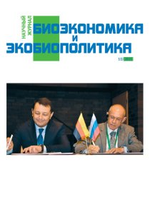Mechanisms of Neuronal Survival in Stroke
Авторы: Зинченко В. П., Magnus T., Kleinschnitz C., De Meyer S.
Рубрика: Тезисы
Опубликовано в Биоэкономика и экобиополитика №1 (1) декабрь 2015 г.
Дата публикации: 15.01.2016
Статья просмотрена: 9 раз
Библиографическое описание:
Зинченко, В. П. Mechanisms of Neuronal Survival in Stroke / В. П. Зинченко, T Magnus, C Kleinschnitz, Meyer S De. — Текст : непосредственный // Биоэкономика и экобиополитика. — 2015. — № 1 (1). — С. 122-122. — URL: https://moluch.ru/th/7/archive/20/614/ (дата обращения: 26.04.2025).
Despite the devastating nature of ischemic stroke, affecting millions of people each year, current treatment options are remarkably limited. Development of better and safer therapies is strongly hampered by the lack of knowledge on the precise pathogenic mechanisms underlying stroke. In recent years IL-10, one of the most central anti-inflammatory cytokines, have been implicated in the modification of neuronal activity and activation of protective pathways. Previously we show that intravenous administration of IL-10 significantly reduces infarct area. In a rat hippocampal neuronal cell model IL-10 prevented the development of posthypoxic hyperexcitability and protected GABAergic neurons from death. The goal of this project is to understand the role of anti-inflammatory processes in neuronal survival and to use the knowledge of IL-10 signaling cascades to increase it beneficial effects, for the treatment of cerebral ischemia. We will show that IL-10 increases resistance of neurons against hypoxia. We will determine the signaling cascades induced by IL-10 that protect cell from hypoxic injuries. These intracellular signaling experiments will provide new insights into the molecular mechanisms of anti-inflammatory treatment in neurons, helping to design future treatment targets. We plan to design new drugs against these targets to block or stimulate some of these pathways. We will develop IL-10 nanobodies - small single domain antibodies derived from camelid heavy chain antibodies that effectively imitate or potentiate the function of human IL-10. All experiments will necessarily be done by at least two groups often even by all four. Transgenic mice will be sent from Hamburg and Leuven to the other partners, treatments from Moscow and Leuven will be tested by the advanced readout techniques in Wurzburg or Hamburg, positive results will be reproduced at least in three laboratories, and information will be quickly distributed between the partners.







